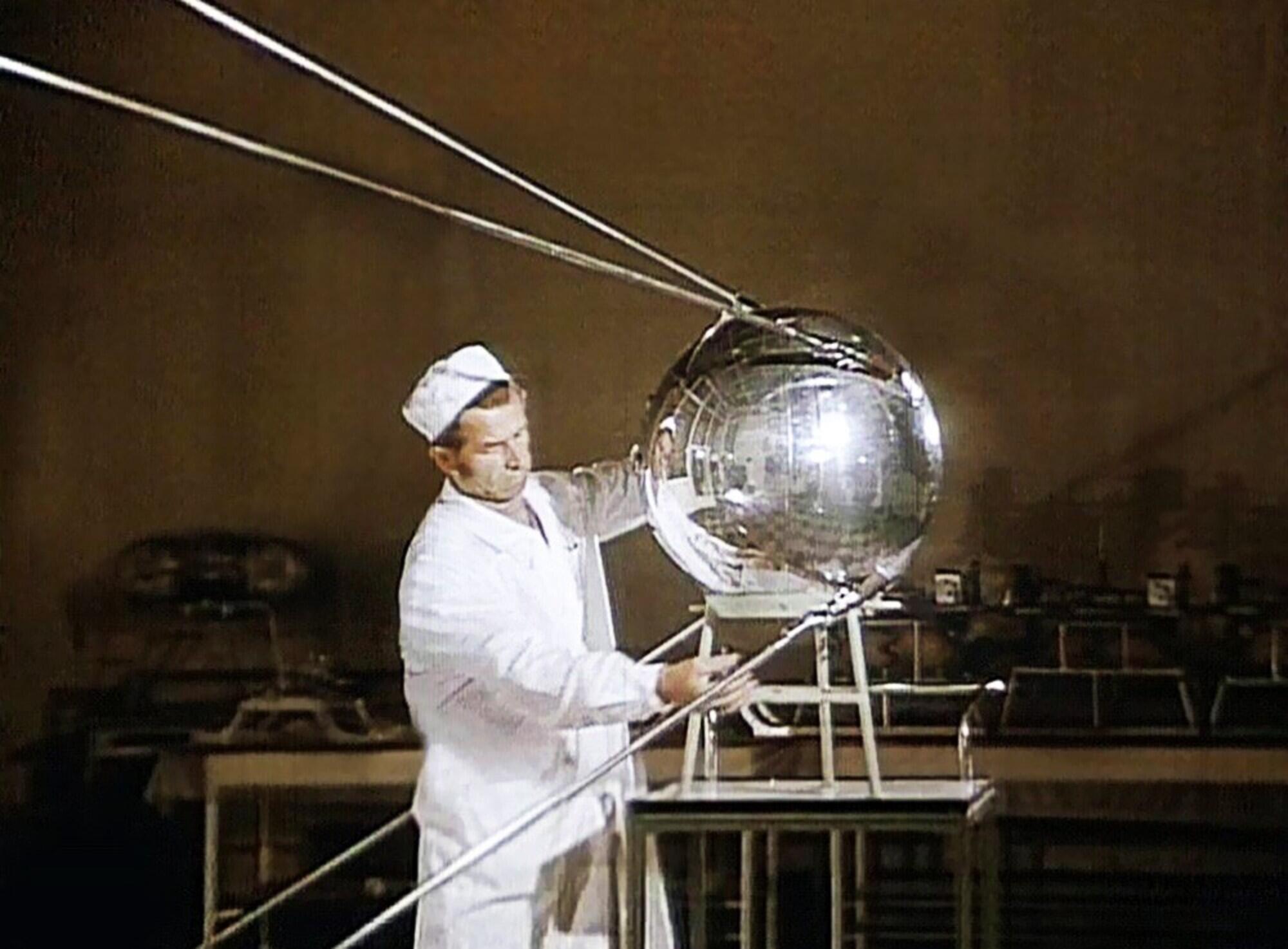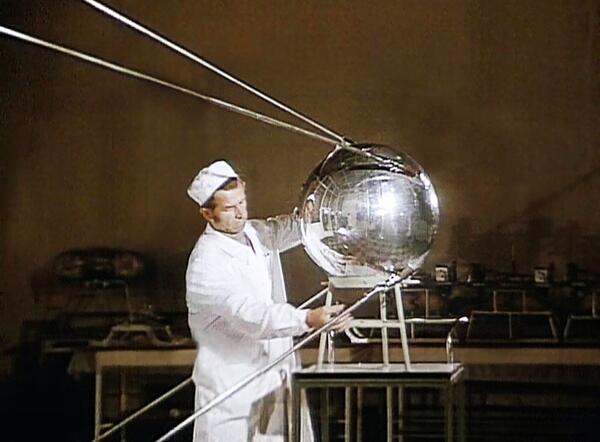On October 4, 1957, the world’s first artificial Earth satellite was launched into orbit, which opened the space era in the history of mankind. The man-made celestial body was launched using the R-7 launch vehicle from the 5th Research Test Site of the USSR Ministry of Defense. Subsequently, the place received the name known to the public today — the Baikonur Cosmodrome.
The development of the satellite began in November 1956. It was led by Mikhail Klavdievich Tikhonravov, a well-known Soviet engineer and designer. Sergei Pavlovich Korolev, the founder of practical rocket engineering, also played a huge role in the creation of the satellite. It was Korolev who sent a radiogram to Moscow on October 2 with a request for authorization of the launch. Having received no response, Korolev decided to act on his own and put the device into orbit.
The spacecraft PS-1, with the letters PS standing for “prosteyshiy sputnik” (the Russian for “elementary satellite”), looked like a ball with a diameter of 58 centimeters and a weight of 83.6 kilograms. The device was equipped with four pin antennas with a length of 2.4 and 2.9 meters — for communicating signals from battery-powered transmitters.
295 seconds after the start, PS-1 and the central unit of a 7.5-ton rocket were launched into an elliptical orbit, the height of which at the maximum point was almost 950 km, and at the minimum — a little less than 300 km. At the 315th second of the flight, the artificial satellite separated from the second stage of the launch vehicle, and its call signs were immediately heard all over the world.
The launch of an artificial satellite was of great importance for the study of the Earth as a planet of the Solar System and for the exploration of outer space. The analysis of the signals received from the satellite enabled scientists to explore the upper layers of the ionosphere, an opportunity previously impossible. In addition, information about the equipment operating conditions was obtained (which was extremely useful for further launches), all calculations were verified, and the density of the upper layers of the atmosphere was determined based on the deceleration of the satellite.
The flight of the first artificial satellite received a lot of attention. The whole world learned about the launch of the spacecraft. In September 1967, the International Federation of Astronautics declared October 4 as the Day of the Beginning of the Human Space Age.
The development of the satellite began in November 1956. It was led by Mikhail Klavdievich Tikhonravov, a well-known Soviet engineer and designer. Sergei Pavlovich Korolev, the founder of practical rocket engineering, also played a huge role in the creation of the satellite. It was Korolev who sent a radiogram to Moscow on October 2 with a request for authorization of the launch. Having received no response, Korolev decided to act on his own and put the device into orbit.
The spacecraft PS-1, with the letters PS standing for “prosteyshiy sputnik” (the Russian for “elementary satellite”), looked like a ball with a diameter of 58 centimeters and a weight of 83.6 kilograms. The device was equipped with four pin antennas with a length of 2.4 and 2.9 meters — for communicating signals from battery-powered transmitters.
295 seconds after the start, PS-1 and the central unit of a 7.5-ton rocket were launched into an elliptical orbit, the height of which at the maximum point was almost 950 km, and at the minimum — a little less than 300 km. At the 315th second of the flight, the artificial satellite separated from the second stage of the launch vehicle, and its call signs were immediately heard all over the world.
The launch of an artificial satellite was of great importance for the study of the Earth as a planet of the Solar System and for the exploration of outer space. The analysis of the signals received from the satellite enabled scientists to explore the upper layers of the ionosphere, an opportunity previously impossible. In addition, information about the equipment operating conditions was obtained (which was extremely useful for further launches), all calculations were verified, and the density of the upper layers of the atmosphere was determined based on the deceleration of the satellite.
The flight of the first artificial satellite received a lot of attention. The whole world learned about the launch of the spacecraft. In September 1967, the International Federation of Astronautics declared October 4 as the Day of the Beginning of the Human Space Age.



